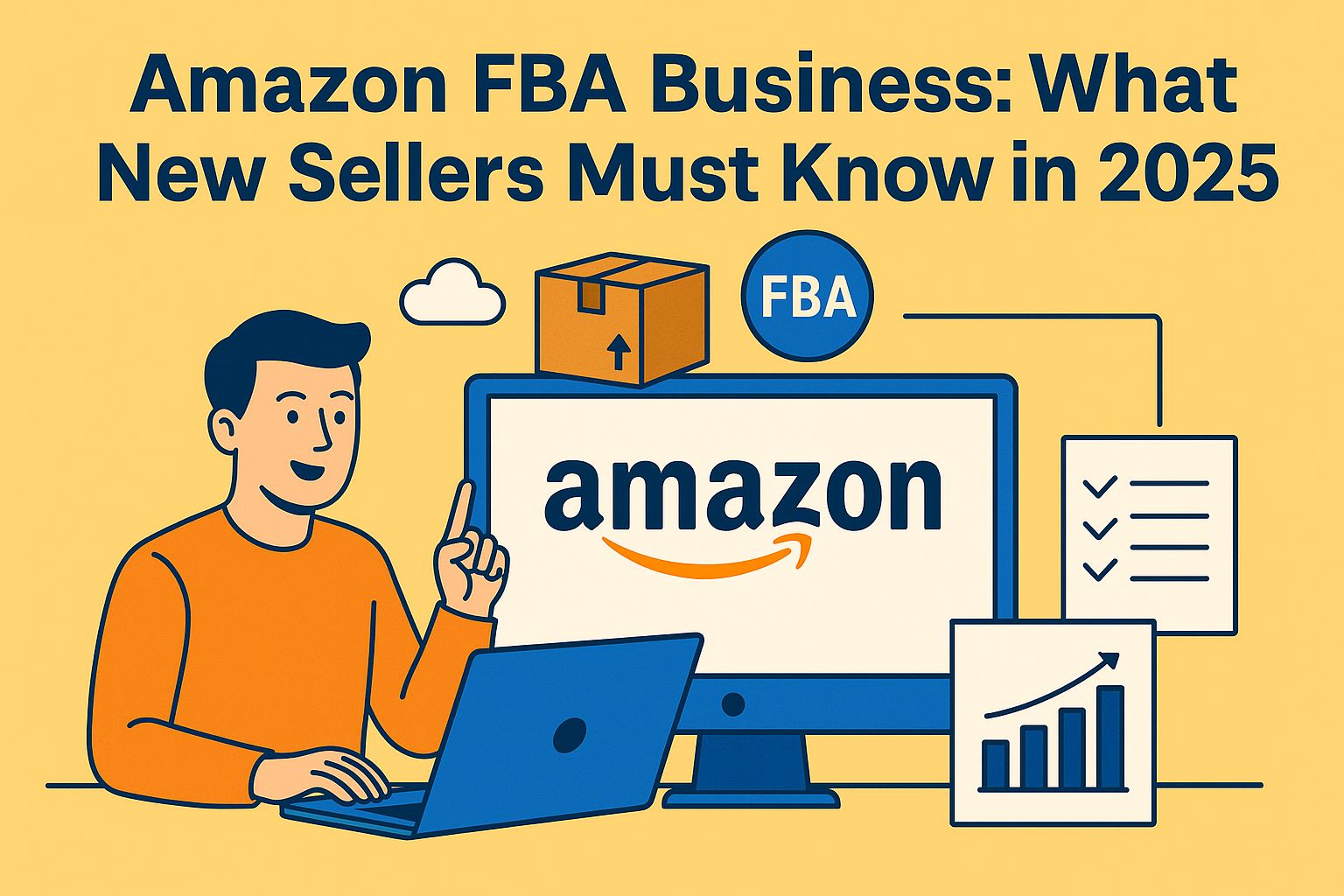- Perfality
- September 1, 2025
- 11:00 am
- Read Time: 5 mintues
Thinking of launching your Amazon FBA business in 2025? You’re not the only one—and no, you haven’t missed the boat.
Thousands of people are diving into the Amazon FBA program every day, hoping to carve out their own space in e-commerce. Some figure it out. Many don’t. The difference? Preparation.
This isn’t a “get rich quick” thing. It’s a real business. If you’re wondering where to begin or how not to screw it up, this guide is going to walk you through the Amazon FBA step by step.
Why So Many New Sellers Hit a Wall
Here’s the truth: most new sellers don’t fail because there’s too much competition. They fail because they didn’t bother to learn the basics.
Some common missteps:
- Picking products just because they saw it trending on TikTok
- Misunderstanding what the FBA service costs
- Skipping research and launching blind
It’s tempting to dive in after watching a few success stories online, but skipping the foundation usually backfires.
What Exactly Is Amazon FBA?
FBA stands for Fulfillment by Amazon. If you’ve never dealt with logistics before, this is what makes it easier.
You send your products to Amazon’s warehouse. They store it, pack it, ship it, and handle customer service. That’s the amazon FBA service in simple terms.
Why sellers go this route:
- You get Prime-eligible shipping without managing orders yourself
- Amazon handles returns and customer issues
- You scale faster without running your own warehouse
In short, the Amazon FBA program lets you focus on selling, not shipping.
A Clear Path: Starting Your Amazon FBA Business in 2025
If you’re serious about getting this right, here’s your Amazon FBA step by step playbook:
1. Research Before Anything Else
Don’t guess. Don’t wing it. Use real tools like Jungle Scout or Helium 10 to:
- Spot products that are searched for but don’t have strong listings
- See how competitive a niche actually is
- Look at reviews and find where competitors fall short
Focus on long-tail keywords. Look for consistent search volume, not just spikes. You’re not trying to go viral—you’re building something steady.
2. Set Up Your Seller Central Account
Go to Amazon Seller Central and register. If you plan to sell more than 40 items per month, choose the Professional account.
You’ll need:
- Email and phone number
- Credit card and bank info
- ID and tax documentation
This part is pretty straightforward, but double-check your info to avoid delays.
3. Find a Supplier You Can Rely On
Most sellers go to Alibaba or similar platforms to source products. You can also try IndiaMart or even local suppliers if that fits your market.
Key things to do:
- Always order samples
- Ask about certifications if required
- Negotiate on cost and minimum order quantity (MOQ)
Take your time here. A good supplier relationship can make or break your amazon FBA business.
4. Create a Listing That’s Built to Sell
This is your digital storefront. It needs to speak to your buyer, not just describe your product.
Include:
- A title with keywords real people are searching
- Bullet points that focus on benefits—not just technical details
- Clear, high-quality images (add lifestyle photos if you can)
Try to answer every potential question a customer might have before they even ask it.
5. Send Your Products In and Launch
You’ll need to prep and label your inventory per Amazon’s guidelines. Then create a shipping plan from Seller Central.
When you go live:
- Start with a manageable ad budget
- Monitor performance closely
- Don’t panic if sales are slow at first—it’s part of the process
Use early data to tweak and improve. Amazon rewards sellers who pay attention.
Rookie Mistakes That Kill Momentum
Here are a few traps that snag new sellers:
1: Following the hype train – If it was big on TikTok last week, it’s probably already overcrowded.
2: Ordering too much inventory – Start small. You’re testing, not going all-in.
3: Forgetting the real costs – Fees, returns, ads, and storage all add up fast. Use Amazon’s FBA calculator before committing.
4: Underwhelming product pages – Even the best products can flop with weak listings. Photos, copy, and keywords matter.
Bottom line? The amazon FBA business isn’t about shortcuts. It’s about making informed moves.
Is Amazon FBA Still Worth Trying in 2025?
Definitely—but only if you’re clear-eyed going in.
Yes, the platform has changed. There’s more noise, more competition. But there are also better tools and more guidance than ever before.
Winning today takes more than luck. It takes research, patience, and smart execution.
If you’re planning to grow an amazon FBA business, think strategy over speed. It’s not a race—it’s a build.
What Perfality Brings to the Table
At Perfality, we’re not here to sell you vague ideas. We’re here to help you build something real.
Our team works hands-on with sellers who are tired of the guesswork. Whether you’re just starting or already have products live, we offer support that’s specific to your brand.
Here’s how we help:
- Use data to find product opportunities most others overlook
- Do the keyword digging you don’t have time for
- Build listings that actually convert
- Guide you through the amazon FBA step by step setup without the fluff
We’ve helped sellers grow from side hustles to full-time brands. Our approach is practical, personal, and rooted in what works—not just what sounds good.
If you’re ready to stop guessing and start building, let’s talk.
Wrapping It Up
The amazon FBA program still holds a lot of potential in 2025. But only for those who treat it like a real business.
Success won’t come from chasing trends or copying others. It comes from:
- Doing real research
- Launching with a clear plan
- Adapting as you learn
If you’re ready to put in the work, this is your year. And if you want help getting it right from day one, you know where to find us. Perfality’s here when you’re ready.






